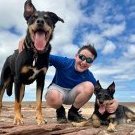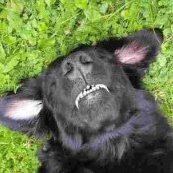Search the Community
Showing results for tags 'Grumman F-14A Tomcat'.
-
Martin Baker GRU-7A Ejection Seat for (3DF48001 For Tamiya F-14A) 1:48 3DF via Hobby Colours Martin Baker have been saving pilot lives since just after WWII, due in part to the sad death of Mr Baker during a test flight of one of their prototype aircraft, although they were already investigating the possibility of emergency escape systems for aircraft. By the 70s the seats had progressed markedly from the rudimentary seats that were initially used, and were zero-zero rated, enabling ejection from a stationary aircraft by means of a rocket motor that automatically oriented the seat so that it gained sufficient altitude to allow successful separation and ‘chute deployment, bringing the pilot down safely with a bit of luck and some flat ground. This set is from a company that is new to us, called 3DF with the motto 'Precision to Perfection' from Greece, who have been brought to us by our friends at Hobby Colours who are also Greek. They create their products in 3D and print each one out using high-definition 3D SLA printing, which guarantees exceptional detail and quality, using minimal parts. SLA printing requires the parts to be supported by fine tendrils of resin during printing until after the resin has been fully cured, or you’d end up with a rather saggy-looking product. These fine ‘fingers’ vary in width, and are easy to remove with a pair of nippers, taking care not to damage the part itself, although the resin is surprisingly rugged during handling. Arriving in a cardboard box with a push-out inner tray, there are two seats inside with instructions, cocooned in small sections of bubble-wrap, and attached to their printing base by the aforementioned fingers. The F-14 was a 2-seater, so you have one for each cockpit, and once you have removed the supports you have two parts for each seat of incredible finesse. The main part is the seat, which has all the details moulded-in, including the crew belts, fine hoses and controls for the equipment of the seat. The ejection handles for the headbox are separate, and are mounted on a wedge-shaped sliver that slots easily into the corresponding slot in the front of the headbox. It’s difficult to see the detail with all the supports around them, so I removed one and put it together, which didn’t take very long at all. Because of the slightly translucent resin used and the finesse of the parts, the detail photographs a bit “funny” (technical term), and bear in mind the actual size of the seat when looking at the photo below, so I have duplicated the photo at nearly actual size in the corner to give a more accurate impression. Conclusion A new company to us, and yet they have hit the ground sprinting, with a stunning product that once painted will truly shine. Detail is excellent, and the parts are easy to liberate from the supports with nippers, so even a total novice could handle it. They’re also available in 1:72 and 1:32 scale if you’re interested. Very highly recommended. Review sample courtesy of
-
My first jet since I was around 16. Wonderful kit, this Tamiya Tomcat. I like challenges, but sometimes I do like to build a kit that goes together without snags, and where you don't need a plastic to putty-ratio of 1:1. Others have built their cockpits and displayed them, and done a better job than I can. Therefor I focus in this build thread on the external painting. Feel free to suggest solutions or tricks. The following techniques aren't new, but I like the result so far. I primed with Ultimate Primers glossy black (I love the way it performs! Never let's me down), then sprinkled it with salt when the primer had cured. That was followed by spraying a speckled/marbled pattern, quite randomly, with Tamiya XF-57, XF-59 both on the upper surfaces (that will end up light grey), and lower (which will be white) with some XF-49 on the upper and XF-55 on the lower surfaces. With the salt removed it looked like this. I then sprayed it with Vallejo 71.001 on the lower surfaces and XF-19 on top. I tried Tamiya white first on the lower surfaces, but it didn't behave the way I wanted. Either it was too opaque to get the effect of the preshading I had done, or it became too "runny", resulting in spidering and pooling. Hence Vallejo, which performed brilliantly. This is the result, and it's almost exactly as I had hoped for. I managed to stop in time, and did it in two sessions, so I wouldn't overdo it. Patience is the trick! Now I'm gonna seal it with some Aqua gloss from Alclad, then put on the decals (there are about a zillion of them!), followed by some washes. Stay tuned, and stay healthy. /Torbjörn



